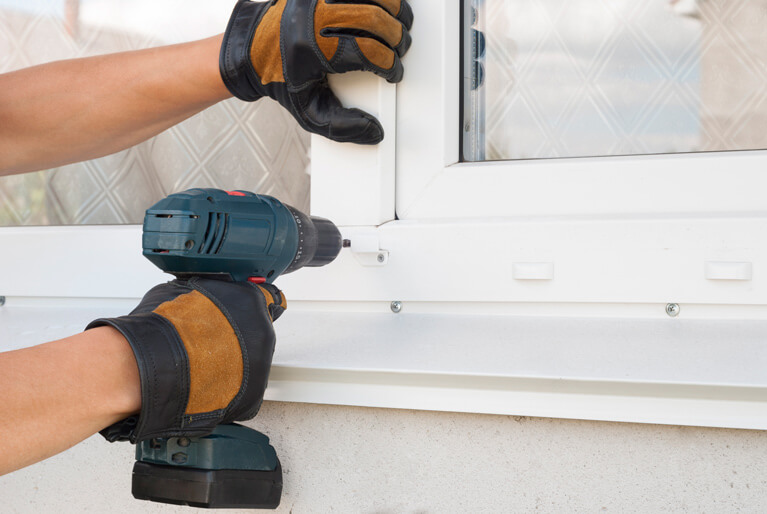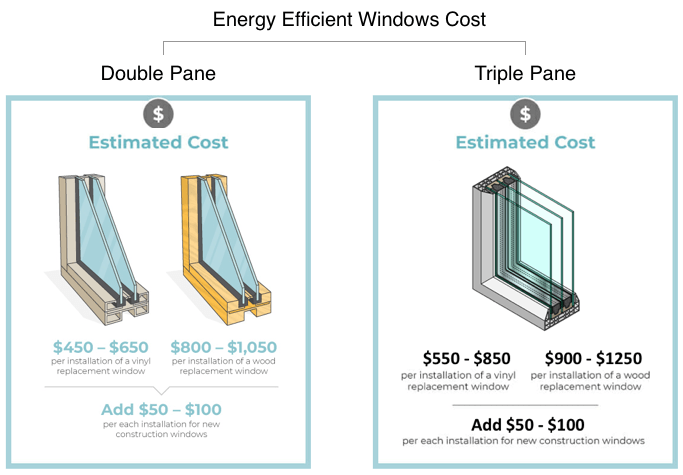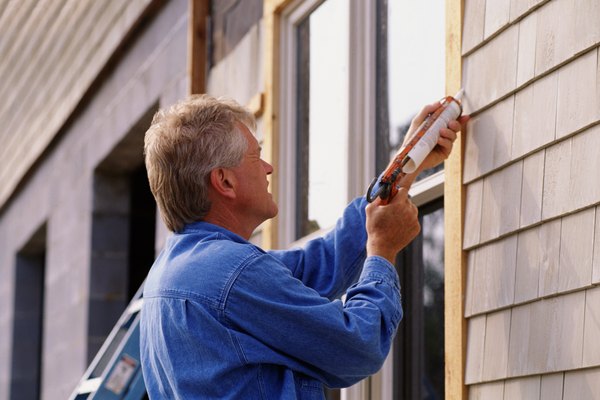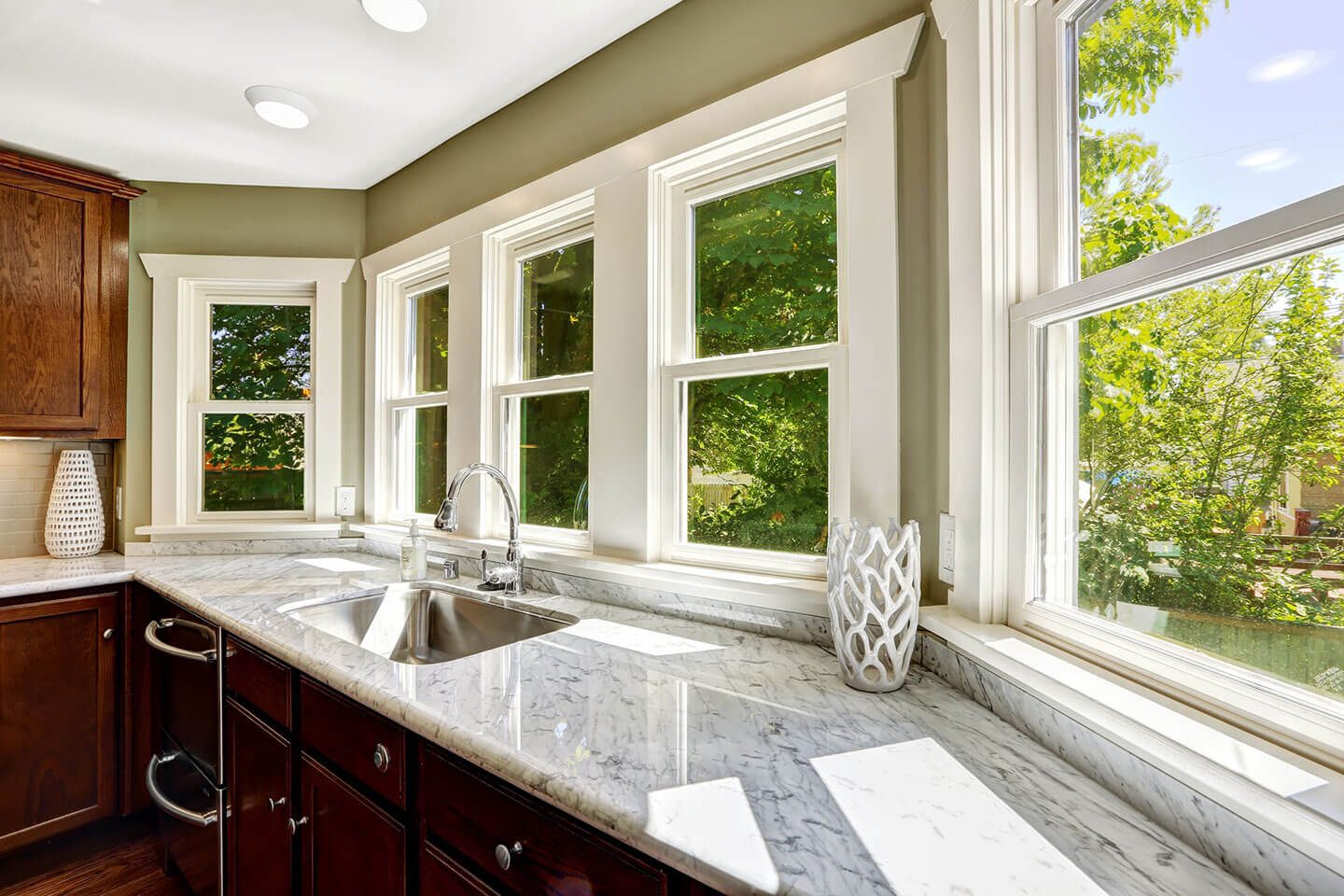FeatureDescription / NotesCladdingToday's wood-framed windows are clad in aluminum, vinyl, or fiberglass to protect the wood from the elements and eliminate painting. They tend to be the most expensive but are more attractive than other materials. Many brands offer various wood types, such as pine, maple, and oak, for the interior.
Gas provides better insulation and is standard on many windows, but the energy savings won't justify paying more for it. Triple-glazing adds a third layer of glass, which reduces noise significantly. Energy savings are improved, but not enough to justify cost in all but extremely cold climates or where there is a constant and very loud noise . It can be single, double or triple thicknesses with air spaces in between. The coating is applied to the outside glass in warmer climates to reflect the sun's heat out, and in colder climates it's applied to the inside glass to keep heat in.
But keep in mind that any coatings applied to glass, no matter how transparent, reduce the visibility.Tilt-in sashOn single and double-hung windows, the sashes can be tilted in for easy cleaning. There are 5 different types of window frame materials for replacement windows that you can choose from. Each comes at a different price point, which will change your installation costs accordingly. These window frame types include aluminum windows, composite windows, vinyl windows, fiberglass windows, and traditional wooden window frames. The window style, energy efficiency, and durability of each differ slightly. Don't fall into the trap of "if I replace more windows" that will equal bigger savings on window replacement costs as often times, these types of windows are of lesser quality and energy efficiency.
However, don't confuse this statement that you can't get deals when applying apples to apples with getting 3-5 window quotes. Even smaller jobs can get discounts to offset the cost of replacement windows for your home. You will save more money on vinyl windows vs fiberglass windows, on your window replacement project.
The US national average of window purchase and installation is $5,000 while most homeowners spend between $3000 and $7500. Replacement windows cost between $300 and $750 per window before installation. The cost of replacing home windows will depend on your choice of window brand, type of window being installed, size, glass, style, features, window accessibility, local labor costs, and more. Individual window prices range from $100 – $2500 with installation adding $150 – $800 per window. New construction windows will add between $50 – $100 each window. Just measure the window height and width for each window you want to estimate and go online or to a home improvement store to get a rough estimate of the costs to replace your windows.
However, as I will explain below there are better ways to keep costs down while ensuring your home is safe from the elements. Single-pane replacement windows are less expensive, but they are not as energy-efficient as double pane windows. Single pane windows are outdated in California and do not meet the building code. Double-pane windows consist of two panes of glass, and the space between the panes is filled with argon gas for better insulation. On average, homeowners save from 18% to 24% on energy costs when replacing single-pane windows with double-pane windows.
An additional benefit is noise reduction, which is very important for those who live in a busy area. The average cost for a standard-size vinyl window that is double-hung, double-pane, and energy-efficient is between $400 and $650 per window installation. For a wood replacement window, expect to pay between $700 and $1,000 including installation. Get free estimates from window replacement companies near you. It is no secret that energy efficient window installations can save you money on energy bills in the long run.
If you are upgrading from older single pane windows to Energy Star double hung windows you will see the most benefit, saving $125 to $350 a year on energy bills. If you were to add other energy efficient options like airgon gas fillers and low-e coatings, you could expect even higher savings. Single-pane window replacement cost on average $120 – $160 depending on frame type, style, and seal coating. This is about $75- $125 less than double-pane windows, but often homeowners choosing this type of window are usually just trying to match what they currently have.
You will find single-pane windows in much older homes and they are often the least energy efficiency of the bunch. If you were to install 10 vinyl double hung double-pane windows in a single story home, you could expect to pay $3,800 to $6,500 in total installation costs. Home window installation costs will vary based on the type of new home windows you choose, the window brand, average local labor costs, and how many windows you want installed.
Average Cost Of Replacing 11 Windows Double-pane window replacement cost on average $225 – $365, depending on the quality of the window. The higher-quality windows will have two panes of glass that are sealed together with a gas fill, while the less expensive versions will have a single pane of glass with a vinyl or aluminum frame. Window replacement costs on average $250 – $450 per vinyl window and $400 to $700 for wood replacement windows with installation into a single-story home. However, the labor to install windows does increase if you own a 2 or 3 story-home. Expect the costs to increase 25-50% per additional story. Therefore, homeowners can expect to pay between $6,500 and $10,000 for a typical project to replace 10 double-hung windows with mid-range double-pane, Low-E Vinyl-frame replacement windows.
Vinyl window replacement costs range from $100 to $850 each with most homeowners paying between $400 and $600 for a double-hung, double-pane, and energy-efficient window. Vinyl frames are the most cost-effective type of window frame and require little maintenance, but over time the color may fade. If the existing window frame in your home is the right size for your new windows, all you need done is a simple window replacement. On the other hand, if the frame is damaged or your new windows require a different frame size, this could cost significantly more. Not only will you be paying for new windows and installation, but you'll have to add in the cost of labor for new construction. The cost of creating a new window opening typically ranges from $420 to $730, not including the new window itself, so ask your contractor ahead of time about rates.
If you are planning to replace many of your homes windows you may be able to negotiate a better overall total price for your project. For energy efficient options there are options available that help improve your windows energy efficiency but come at a cost. There are over 15 different window types with some of the most being double-hung, casement, bay and fixed.
Each type has a different average cost which you will see below in the table. The national average cost range for window replacement is between $3,500 and $10,500, with most people paying around $7,500 for 10 vinyl double-hung low-E glass windows installed simultaneously. This project's low cost is around $550 for a handyman to replace 1 single-hung vinyl window. The high cost is about $36,000 for replacing all the windows at once with wood-frame windows in various sizes, all with double-paned and impact-resistant low-E glass. Window replacement costs $550 on average with most homeowners spending between $400 and $1,000 per window including installation. The cost to replace every window in a 3-bedroom house ranges from $4,500 to $9,600 depending on the sizes, frame materials, type, and the number of windows.
Labor cost for professional installation is $159 to $258 on average. Of course, the quality of materials you choose will also affect the final cost of your window installation project. Standard window costs can vary from roughly $85 to $950 each, depending on what type of pane the window has. Different window panes offer different levels of insulation, and the more layers your window pane has, the more expensive it will be. Single-pane windows are the most affordable, while laminate and tempered-glass windows are the most expensive. Still, if you live in a noisy area or a particularly cold or warm place, having extra insulation can be worth the price.
Read on to learn more about some of the most common window pane types. The average cost to install new windows is $3,250, which includes removal and replacement of six standard windows. While the cost to replace windows typically ranges from about $2,050 to $4,300, higher-end projects can cost upward of $10,500. Triple-pane average window replacement cost on average $300 – $650. You will find that the energy efficiency rating on triple-pane windows is very high, which means that they save money on your energy bills.
The average labor cost to replace a vinyl double-hung window is $250 – $450 per window installation. Expect the cost of wood replacement windows to be in the range of $400 to $700. Alside makes vinyl replacement and new construction windows.
They can custom fit replacement windows to your existing structure. This can fit hard-to-find sizes, while keeping costs down. They have a range of styles, including popular ones like sash and casement. The average cost to replace a double-hung, double-pane window ranges from $450 to $1,000.
A double-pane vinyl window ranges from $450 to $600 to install, while a double-pane wood replacement window costs between $800 and $1,000. Think about the window frame material when considering window costs. At Select Home Improvements, we believe in vinyl windows. They are less expensive than wood windows or fiberglass windows. The cheaper windows than vinyl are made from aluminum, but aluminum is not energy efficient and prone to corrosion, so we do not recommend it.
Low-E window replacement cost on average $175 – $350 per window, depending on the size of the window. For example, a 24″ x 36″ Low-E double-pane window can cost $250 to $275 installed by a professional contractor. A Low-E window that has one or more film layers applied to it helps reduce the U-factor of the window and provides year-round energy savings. They also make an incredibly wide range of products, including low-end and high-end versions of most windows.
They make every type, including sash, casement, picture, and bay windows. They also have a variety of different glass features to choose from. This includes casements, sash, bay, and picture windows1. Vinyl is a low-maintenance material that does not require painting.
It tends to be smooth inside and out and creates a lightweight frame. Sometimes, it is layered over another material like aluminum or wood for more durability because vinyl can warp or crack alone. When you are looking at prices per window you can expect to pay more for high quality window brands such as Simonton, Milgard, Marvin, or Pella windows.
See our list ofthe best window brandshere for more in-depth pricing for all window types offered. To give you an idea of how much you can expect to pay for each window brand we took a standard size vinyl double hung window from each of the brands to create this price chart below for comparison. Each window brand offers different price tiers for upgraded features, better frame types, longer warranties, etc. They may also offer special discounts to window contractors in your area that will be passed down to you.
Installing new windows is a worthwhile home improvement project that can add a fresh, new look and even lower your energy bills. But window replacement is a job that requires precision and skill, so it's wise to call a professional window installer to help out. Professional contractors will also be able to dispose of old windows, often free of charge. Read on to learn more about the factors that can affect window replacement costs and how to set your budget.
There are a variety of energy-saving upgrades for new home replacement windows, including double or triple paned glass, argon gas fills, low-e coatings, soundproofing, and the list goes on. What makes these windows energy efficient is all dependent on where you live. If you live in a warmer climate, reflective coatings will help you the most and colder climates, gas-filled double-pane glass will be your best solution for energy efficiency.
If you have an older home, the windows are not likely to be as efficient as modern versions. You can choose to upgrade to newer vinyl or fiberglass windows for an average cost of $550 a window, depending on the house. However, you are more constrained when your home is historic.
Historic homes must use materials and styles that are in keeping with the house. You may need to install wood windows, which have an average cost of $650 to $1,300 per window. All other aspects of the replacement should have costs comparable with newer homes.
The main factors used when calculating prices are the window type, the window framing material, and labor costs. The average cost for a typical low-E glass vinyl window is $244 to $373 while labor runs $159 to $258 to install. There are over 10 different window designs ranging from fixed non-opening windows to more efficient sliding and double-hung types. On average a window replacement costs anywhere from $150 to $750 per window. The most common windows installed are double hung or casement windows which are very affordable. All of these custom option will help build up your windows' energy efficiency rating and save you money on future utility bills.
Added on energy efficient window options will affect the total cost. Labor costs change by your location and the window installation type. On average you can expect it to cost an additional $38 per hour with most regular sized window typesbeing able to be installed within a one hour time frame. However if your window installation will require creating a new opening in your home, then the time frame can expand as well as total labor costs. There is a pretty wide range in the average price of a replacement vinyl window.
Factors will include the difficulty contractors have with any of the steps mentioned above, how your home is constructed, how many windows are being replaced, and so on. You can expect the job to cost around $300 to $600 per window, though, in the majority of cases. In addition to the type of pane you choose, the type of window you purchase for your project will also affect the cost.
While classic single-hung windows are the cheapest, bay windows are one of the most expensive options. If you're still not sure what type of window is right, contact a pro to make custom windows for your home. Read on to see a detailed cost guide categorized by window style.


























